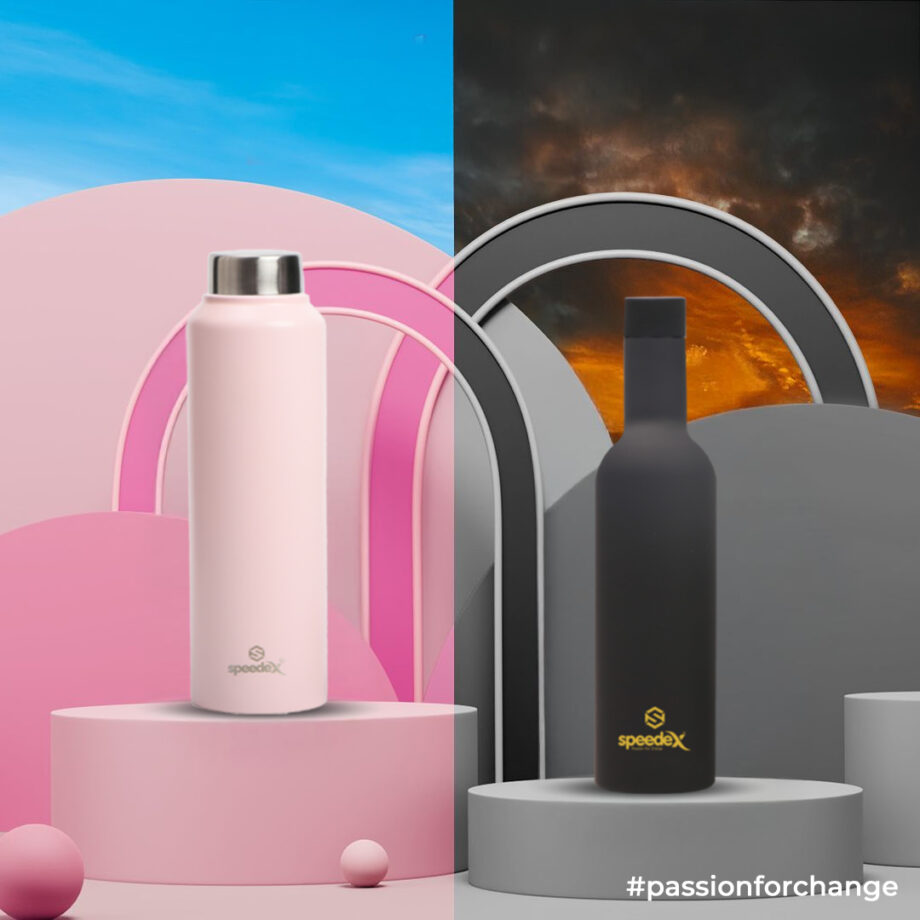Many people consider factors like material, size, and design when choosing an Insulated Water bottle. However, one of the most critical decisions is whether to go for an Insulated or non-insulated bottle. While both have their benefits, it’s important to analyze which Insulated or non-insulated bottle is a better healthier option. Let’s break down the pros and cons of each type and determine which is the better option for maintaining overall health.
Insulated Water Bottles
Manufacturers typically make insulated water bottles with a double-wall vacuum-sealed design, which helps maintain the temperature of the liquids inside. They usually construct these bottles from stainless steel to ensure durability and safety. Athletes, travelers, and health-conscious individuals commonly use them for both hot and cold beverages.
Pros:
- Temperature Regulation – Insulated water bottles are double-wall vacuum designed to maintain the temperature of liquids for extended periods. Cold water stays cool for up to 24 hours, and hot beverages remain warm for up to 12 hours, reducing the risk of bacteria growth due to temperature fluctuations.
- Prevention of Chemical Leaching – Most high-quality insulated bottles are made of stainless steel, which is resistant to chemical leaching. Unlike plastic bottles, they do not release harmful chemicals such as BPA, phthalates, or microplastics into the water.
- Better Hydration Encouragement – People tend to drink more water when it is at a pleasant temperature, promoting better hydration habits. Cold water in warm weather can be refreshing, encouraging increased water intake.
- Condensation-Free – Insulated bottles do not sweat, preventing moisture buildup, which can lead to bacterial growth on the bottle’s surface.
- Eco-Friendly and Durable – These bottles last longer than plastic alternatives and contribute to reducing plastic waste, making them a sustainable choice.
Cons:
- Heavier and Bulkier – Due to their double-wall construction, insulated bottles are often heavier, making them less convenient for travel, especially when carrying multiple items.
- More Expensive – High-quality insulated bottles tend to be pricier than non-insulated ones. However, their durability and health benefits often make them a worthy investment.
- Limited Transparency – Unlike some plastic or glass bottles, most insulated bottles do not allow users to see the water level inside, making it difficult to gauge how much water is left.
Non-Insulated Water Bottles
Manufacturers commonly make non-insulated water bottles from plastic, aluminum, or single-wall stainless steel. They are lightweight and convenient for everyday use but do not offer the same level of temperature control as insulated bottles.
Pros:
- Lightweight and Portable – Non-insulated bottles are generally lighter and easier to carry, making them ideal for casual use, short trips, and workouts.
- Cost-Effective – These bottles are more affordable and widely available in different materials, including plastic, aluminum, and stainless steel, making them accessible to a broader audience.
- Easier to Store and Clean – The simpler structure of non-insulated bottles makes them easier to clean and store without taking up too much space. Many are also dishwasher safe, adding to their convenience.
- Variety of Options – Non-insulated bottles come in various designs, materials, and sizes, providing consumers with a wide range of choices to fit their specific needs.
Cons:
- Temperature Fluctuations – Water in non-insulated bottles quickly adapts to surrounding temperatures. If left in a hot car, the water may become excessively warm, which can promote bacterial growth and make drinking water less appealing.
- Potential for Chemical Exposure – Many non-insulated bottles, especially those made of plastic, may contain BPA or other harmful chemicals that can leach into the water when exposed to heat. Over time, this may lead to health concerns.
- Condensation Issues – When filled with cold water, non-insulated bottles tend to sweat, creating moisture that can attract bacteria and mold, making them less hygienic for prolonged use.
- Less Durable – Plastic and aluminum non-insulated bottles are more prone to wear and tear. They can develop cracks, dents, or even retain odors after extended use.
Which One is Healthier?
When it comes to overall health, insulated water bottles are the better choice. They prevent exposure to harmful chemicals, maintain water at a safe and desirable temperature, and reduce the risk of bacterial growth. While they may be heavier and more expensive, the long-term benefits outweigh these drawbacks.
If choosing a non-insulated bottle, it’s crucial to opt for BPA-free stainless steel or glass rather than plastic to minimize chemical exposure. Regular cleaning and avoiding extreme temperature changes can also help maintain hygiene. To prevent bacteria buildup, wash and dry the bottle properly after each use.
Conclusion
While both types of bottles Insulated or single-wall stainless steel have their place, insulated water bottles provide a healthier and safer drinking experience in the long run. They offer superior temperature control, prevent harmful chemical exposure, and encourage better hydration habits, making them a wise investment for anyone looking to prioritize their health and well-being.


